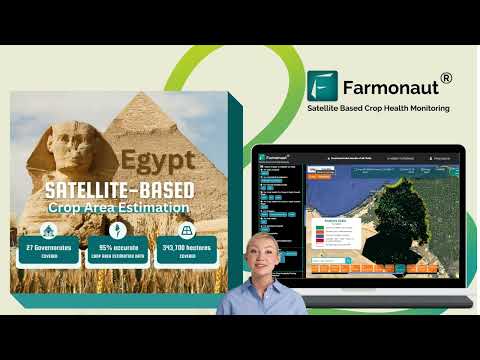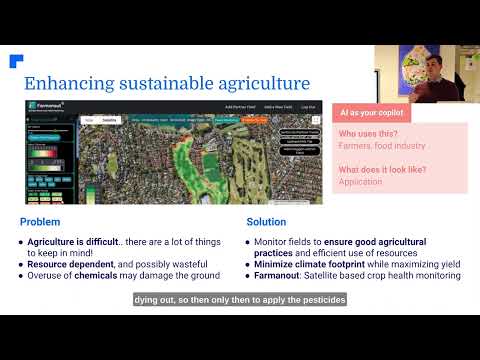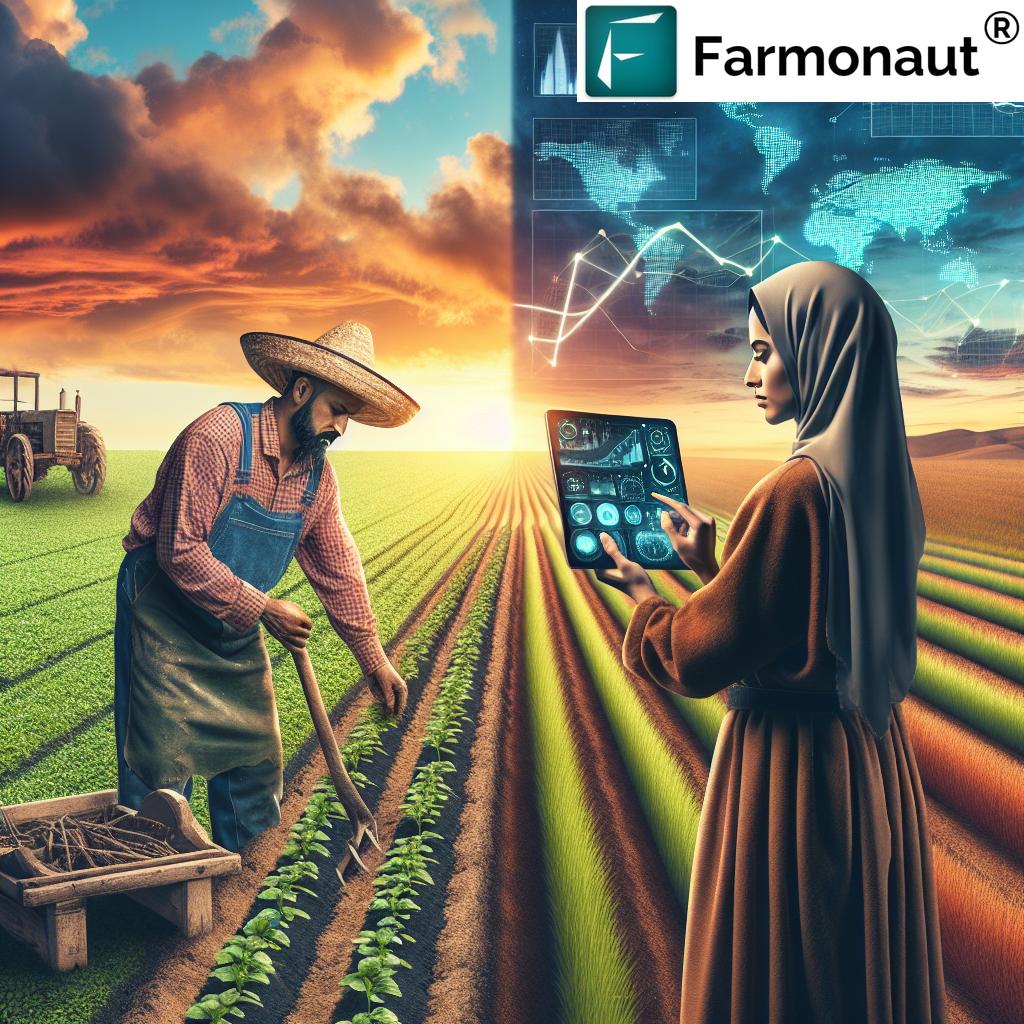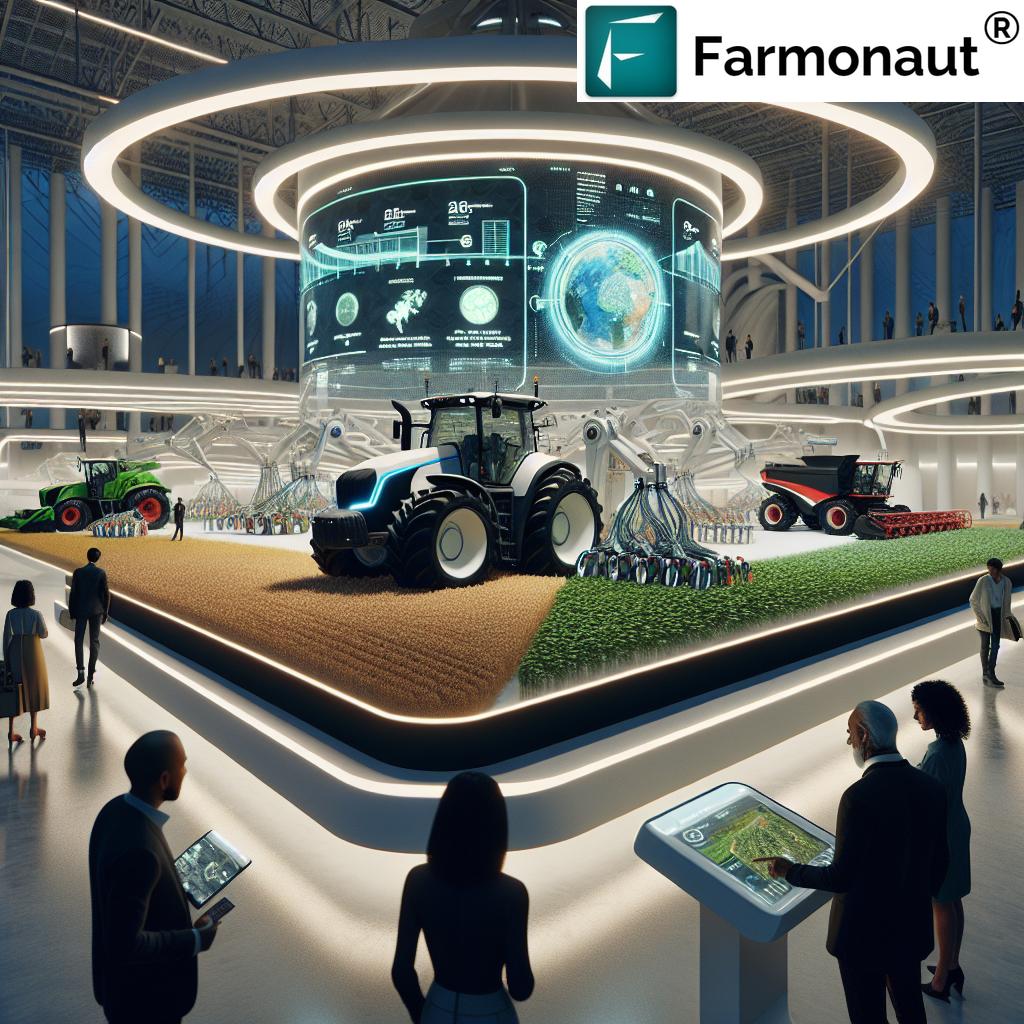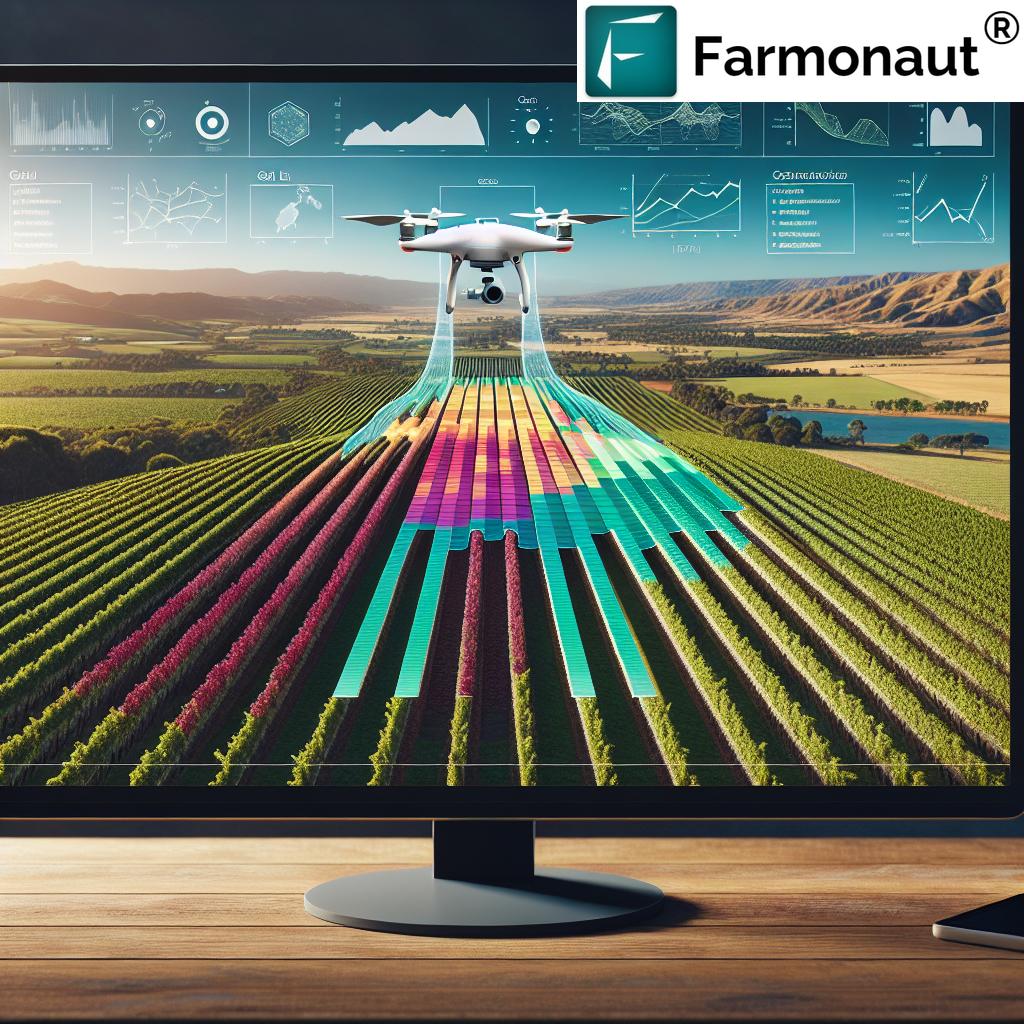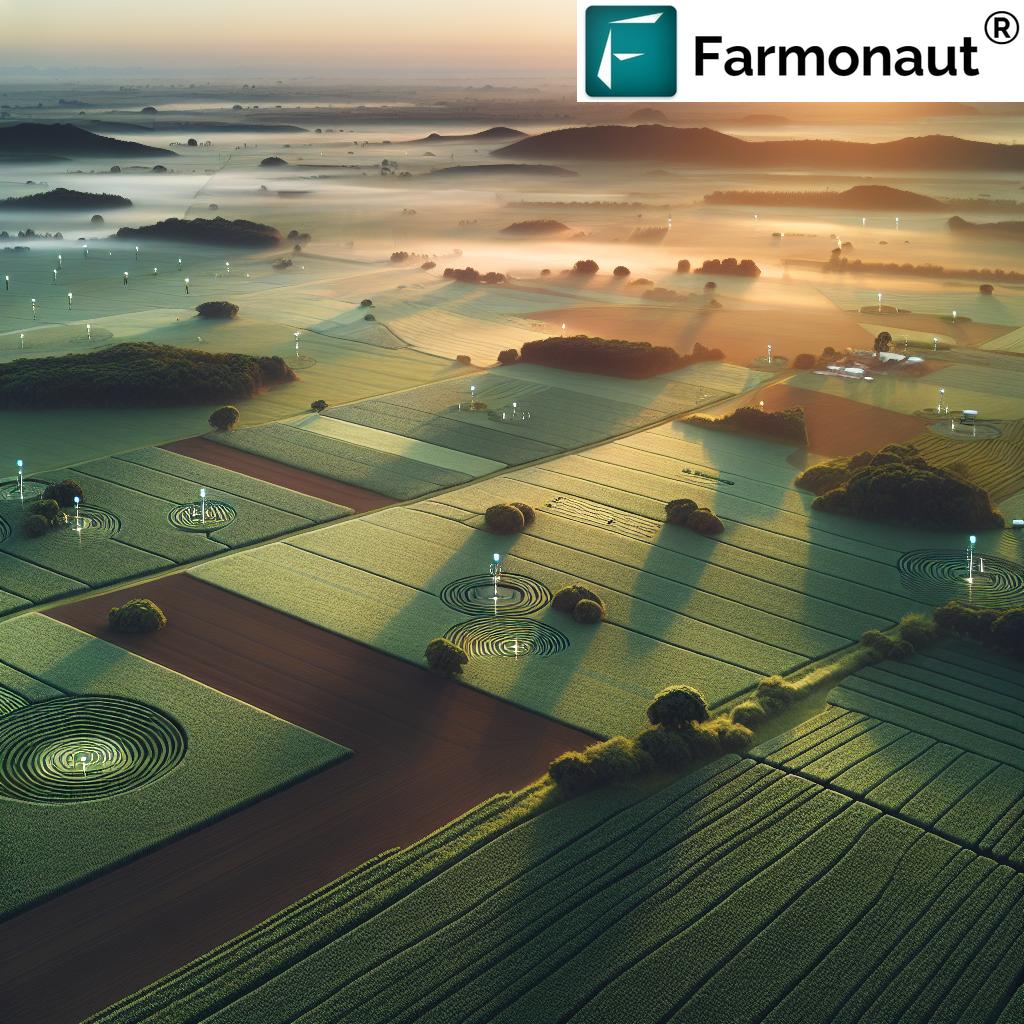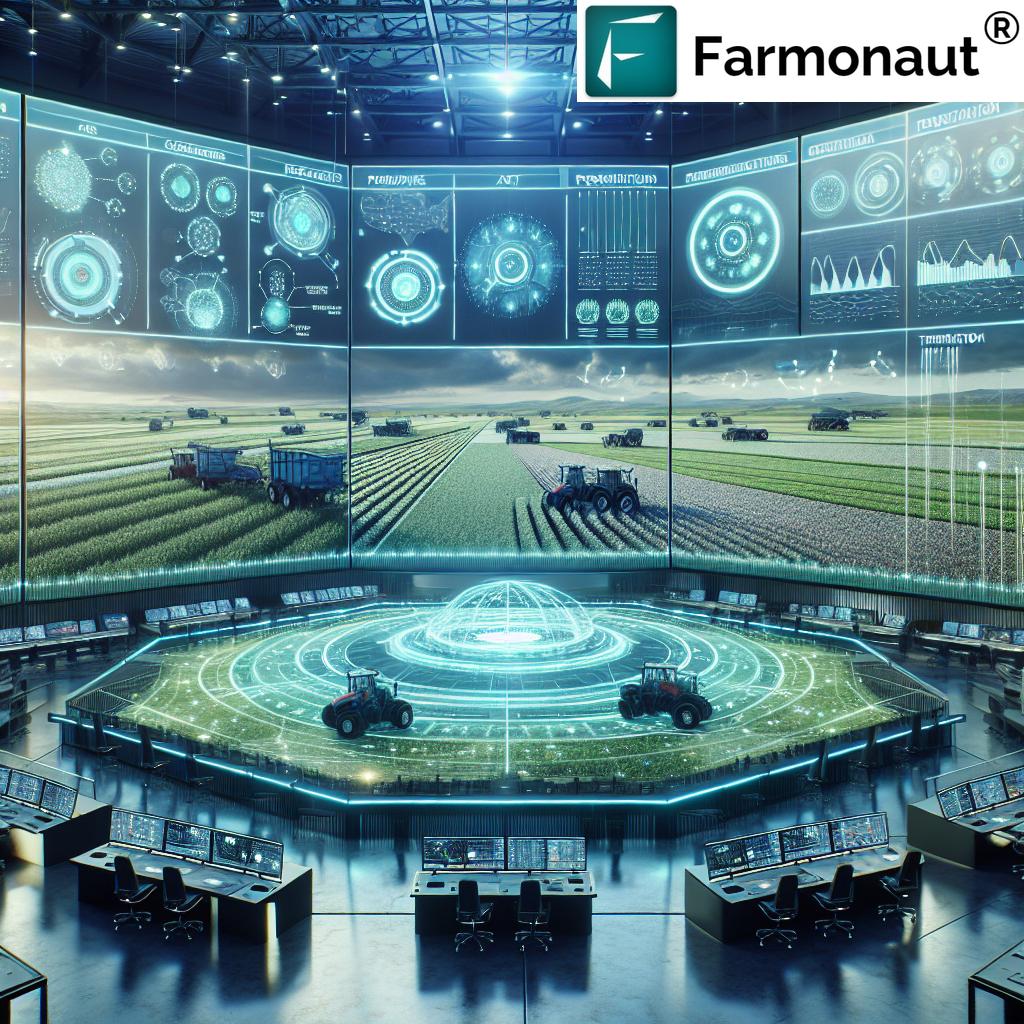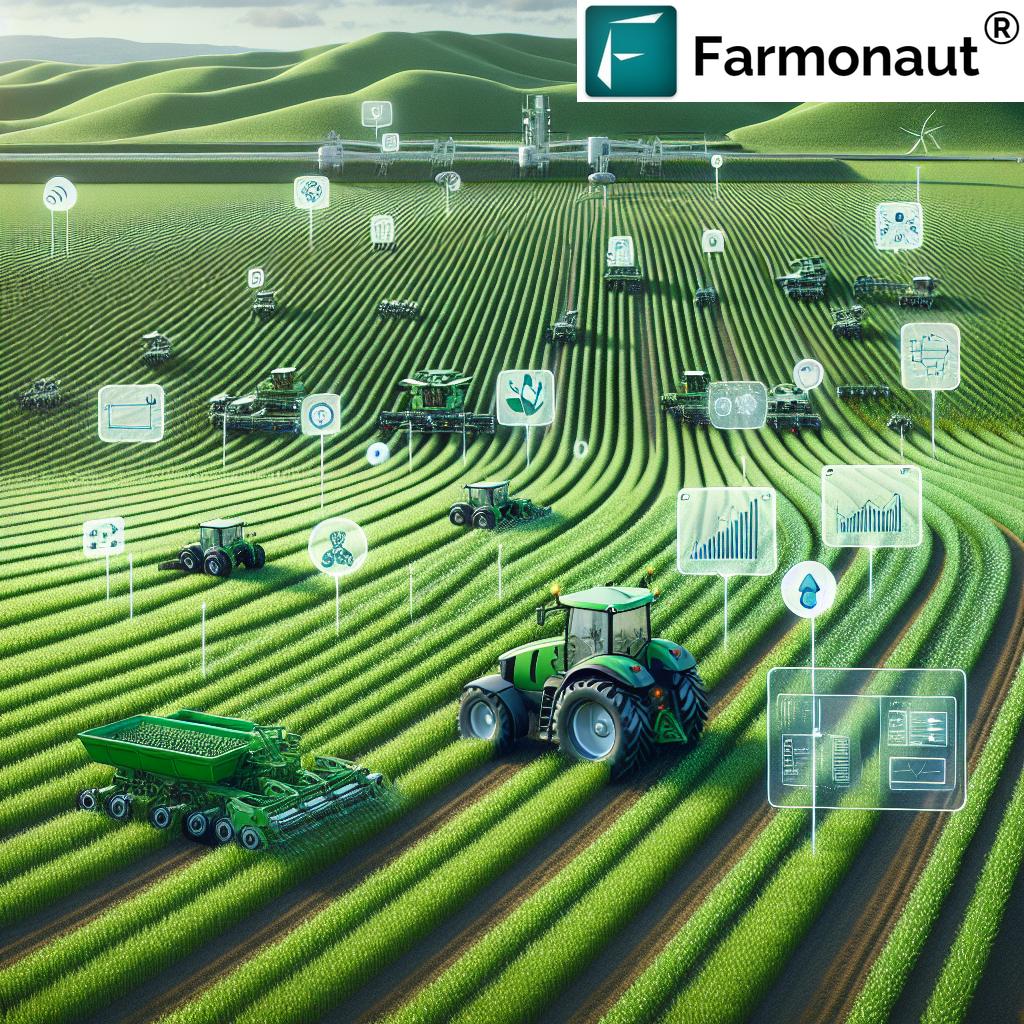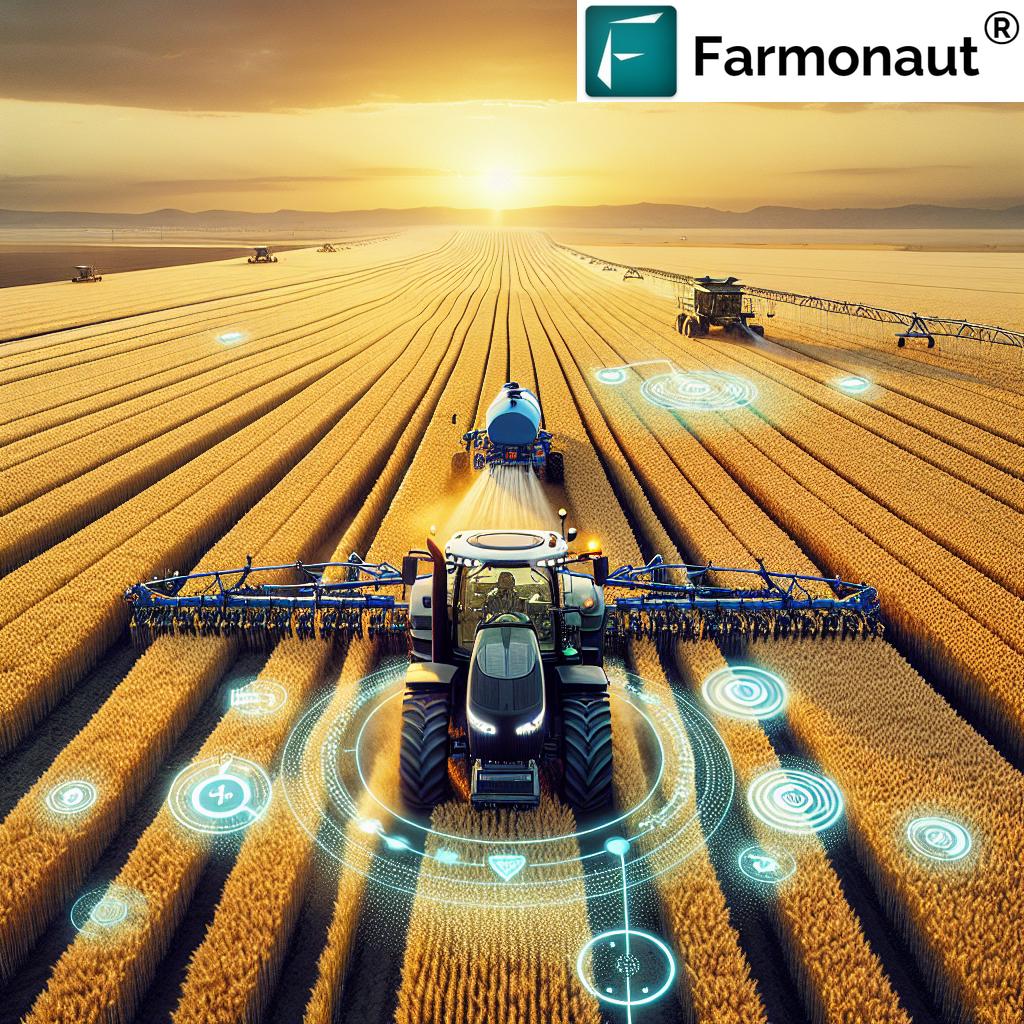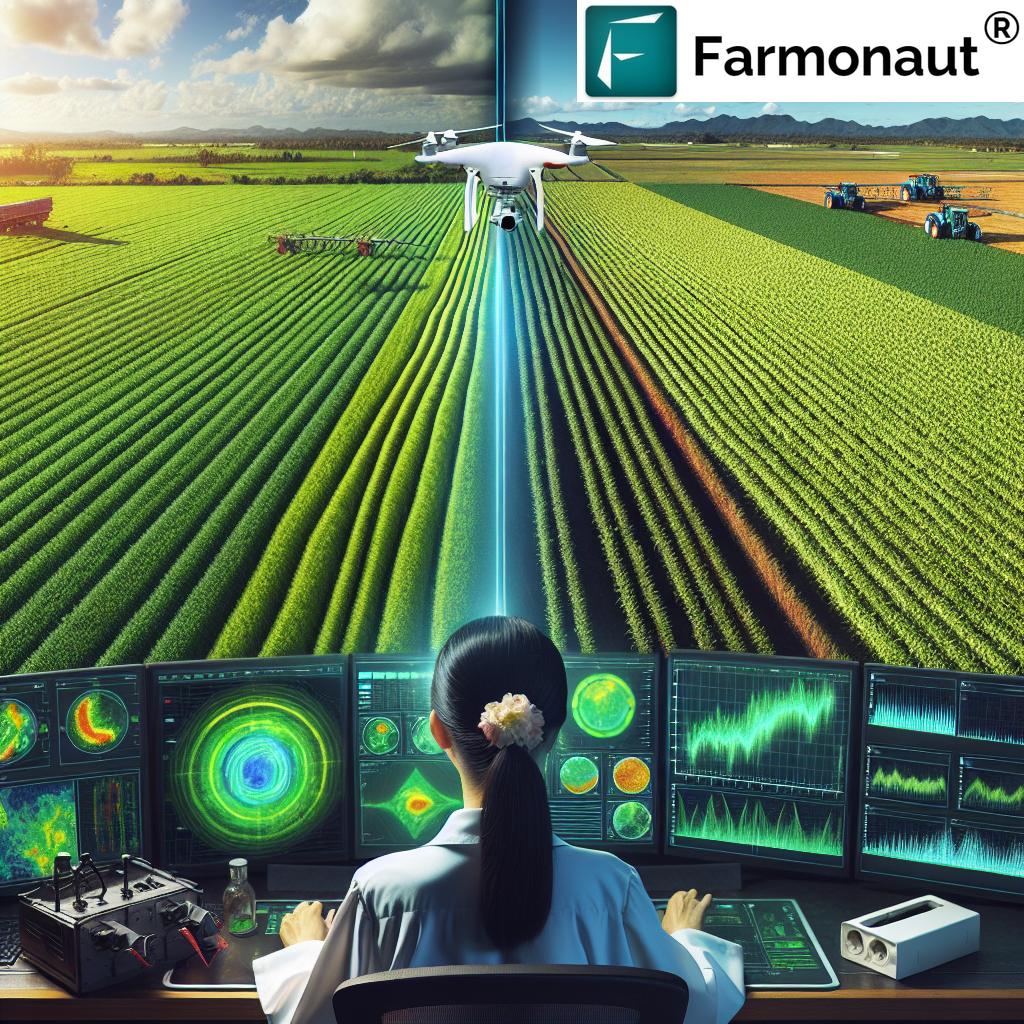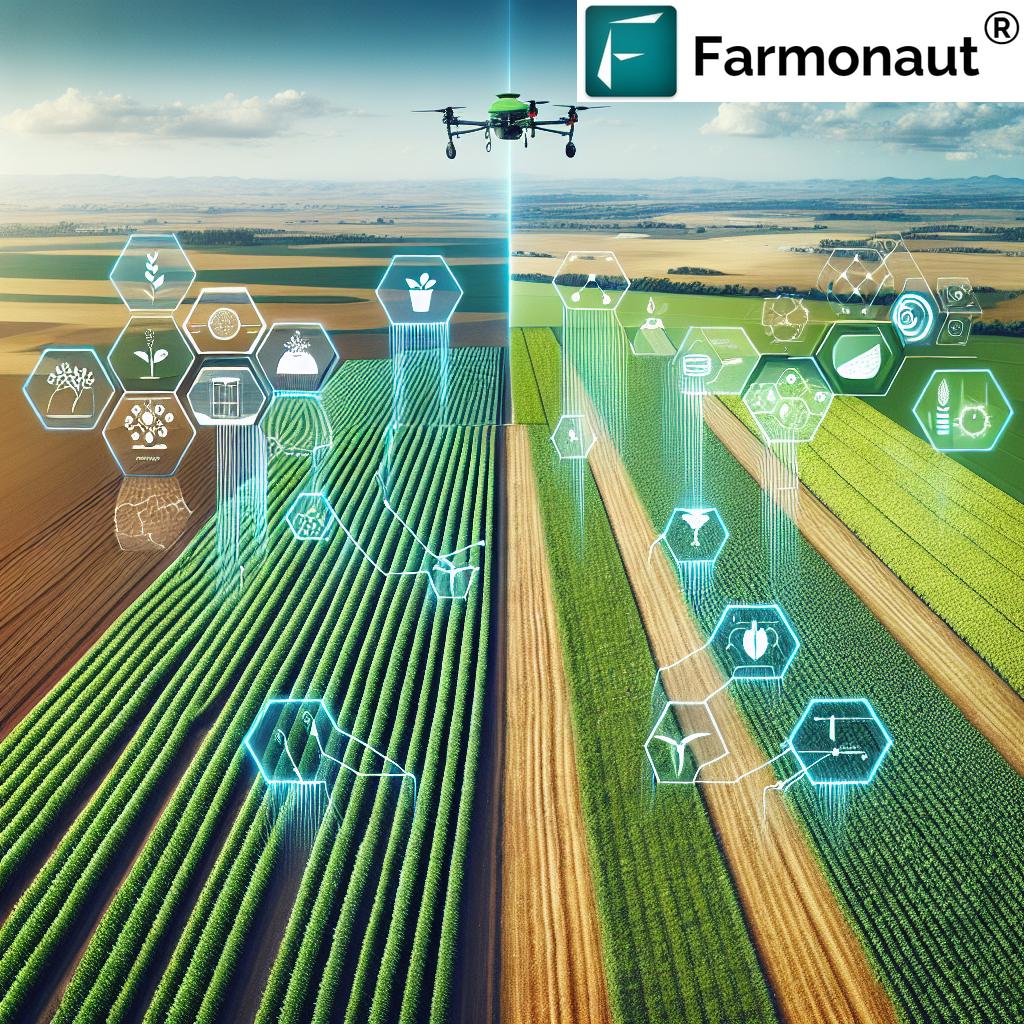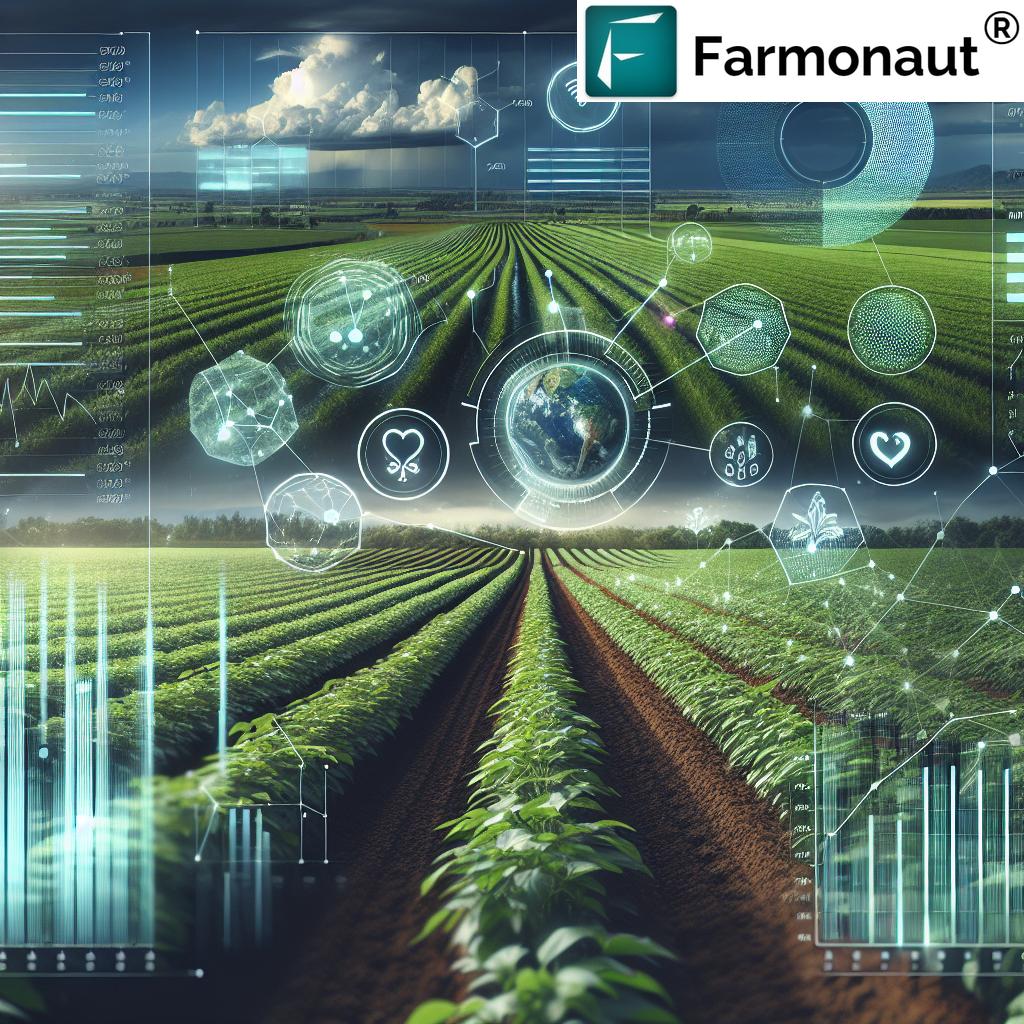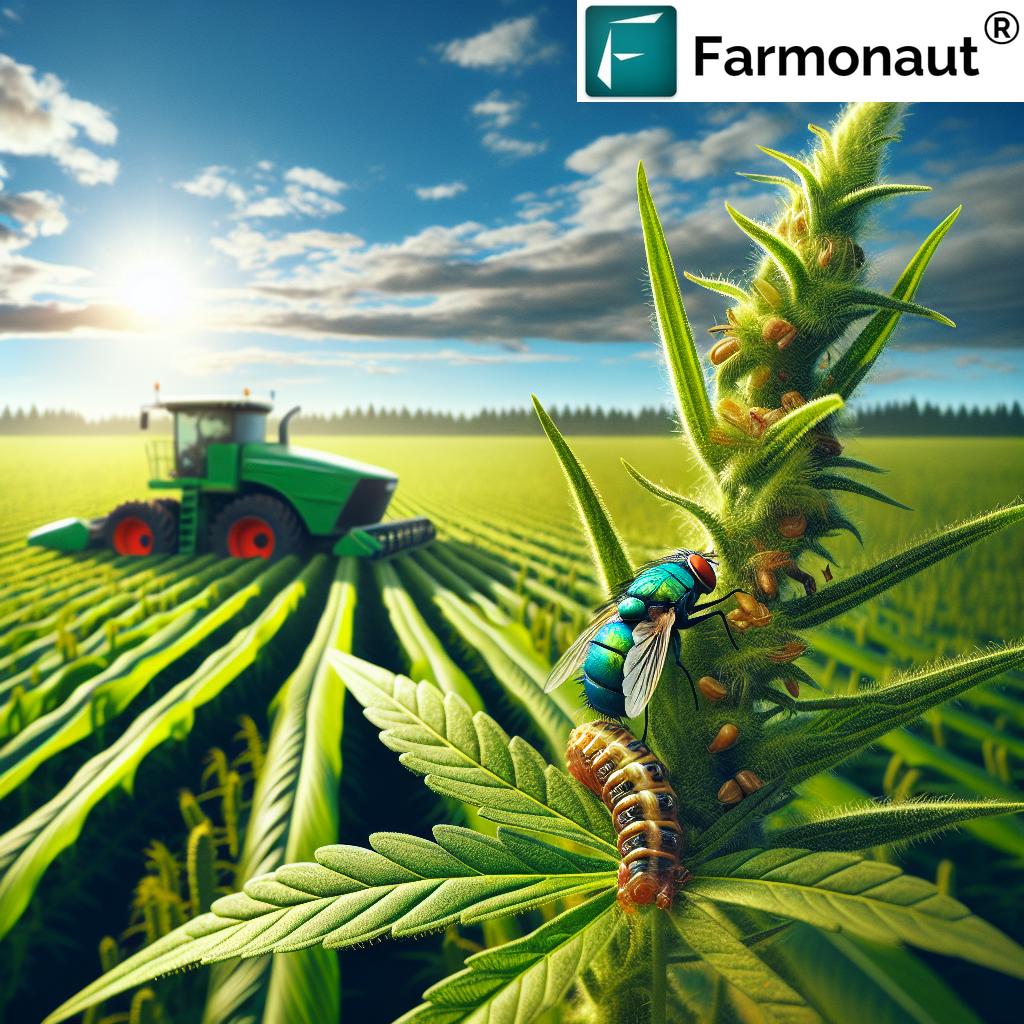Farming Precision: 7 Shocking Tech Breakthroughs Revealed!
Meta Description: Precision farming uses data, AI, and technology to revolutionize agriculture. Explore 7 game-changing breakthroughs increasing yields, reducing costs, and promoting sustainability.
Table of Contents
- Introduction: The Precision Farming Revolution
- Shocking Tech Trivia #1
- Why Precision Farming Matters
- The 7 Breakthroughs in Precision Agriculture
- Technology Impact Comparison Table
- Shocking Tech Trivia #2
- Benefits of Precision Farming
- Challenges in Implementing Precision Farming
- Emerging Trends & Innovations in Agriculture
- Precision Farming Made Easy with Farmonaut
- Farmonaut Subscription Plans
- Frequently Asked Questions
- Conclusion: A Smarter, Sustainable Future
Introduction: The Precision Farming Revolution
In today’s rapidly advancing world, precision farming stands at the forefront of agricultural innovation. Also known as precision agriculture, this revolutionary approach harnesses data-driven farming solutions, integrating technologies like AI, IoT, GPS, drones, and more to transform traditional farming methods. By tapping into real-time information about crop health, soil conditions, moisture levels, and weather, we as farmers and agricultural professionals are empowered to make smarter, efficient decisions while cultivating healthier, more productive fields.
With the global demand for food on the rise and environmental concerns intensifying, adopting precision agriculture technologies is not just a trend—it’s a necessity for sustainability, profitability, and resilience. Agricultural operations worldwide are experiencing a dramatic evolution as we incorporate smart farming systems, satellite-based monitoring, and autonomous farming equipment into our everyday practices.
“AI-driven precision farming can increase crop yields by up to 30% using advanced data analytics and smart sensors.”
Why Precision Farming Matters
Precision farming enables us to transition from blanket, one-size-fits-all agricultural practices to targeted, resource-efficient systems. Through the integration of smart sensors, GPS-guided tractors, drones for aerial crop monitoring, AI-powered analytics, and IoT-enabled equipment, we unlock the capacity to:
- Maximize yields by optimizing each square meter of our fields
- Reduce costs by efficiently managing fertilizers, pesticides, and water usage
- Protect the environment by minimizing chemical runoff, soil degradation, and water waste
- Boost profitability with informed, timely decisions based on real-time, actionable data
- Adapt to changing conditions and reduce risk through predictive AI in agriculture
Embracing this shift is more than just upgrading hardware—it’s a commitment to sustainable agriculture practices, future-proofing our farms, and securing food systems for generations to come.
The 7 Breakthroughs in Precision Agriculture
Let’s explore the seven most astonishing breakthroughs in precision agriculture technologies reshaping the future of farming:
1. GPS & Auto-Guidance Systems
One of the earliest adopters in precision farming, GPS (Global Positioning System) technology, combined with advanced auto-guidance systems, fuels the foundation of smart field operations. By leveraging satellites, we gain real-time geolocation data—enabling tractors and agricultural machinery to operate with pinpoint accuracy across our fields.
- Benefits:
- Minimizes overlap and missed strips during planting, fertilizing, and harvesting
- Reduces fuel and labor costs with more efficient field navigation
- Enhances uniformity and maximizes productive land use
- Supports automation, decreasing operator fatigue
- Example: Using GPS-enabled auto-steer, we can set planting lines with sub-inch repeatable accuracy, ensure variable rate application of inputs, and streamline harvesting operations.
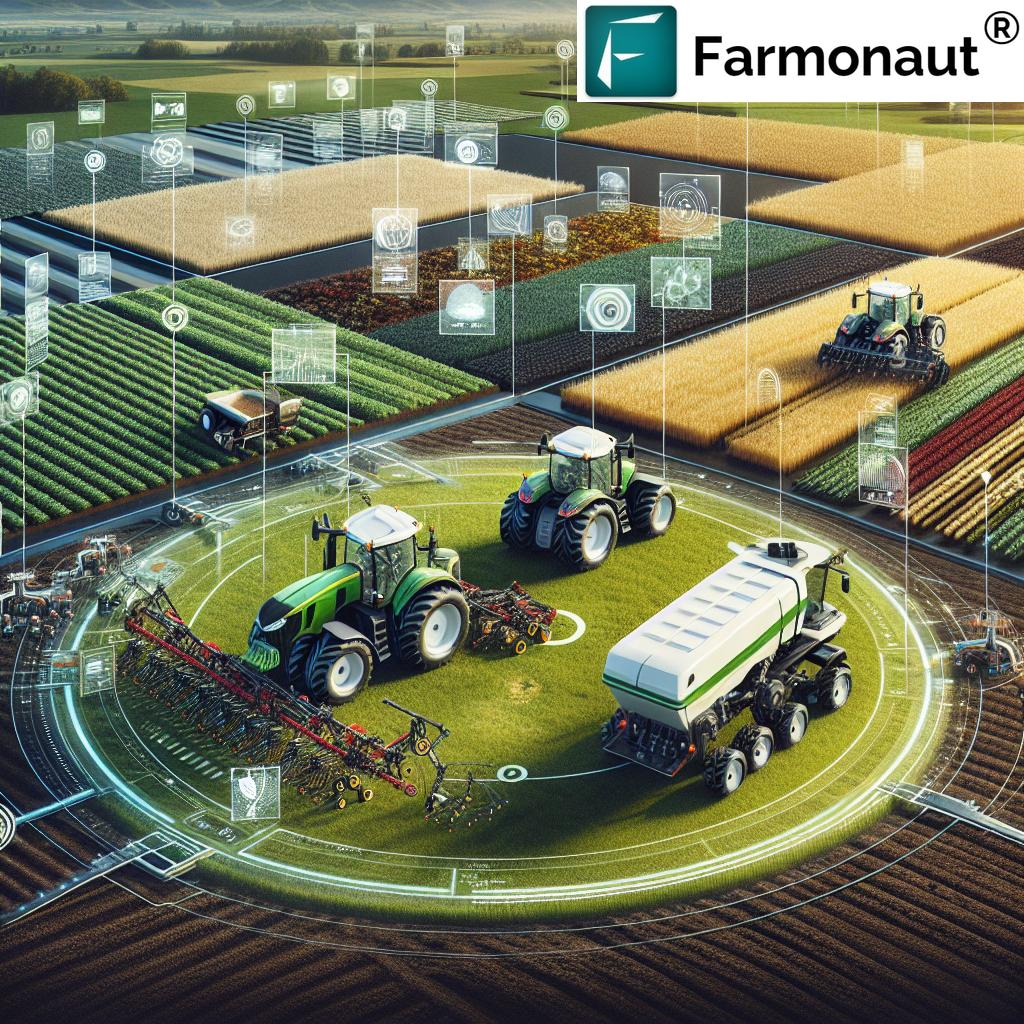
2. Variable Rate Technology (VRT) in Farming
Variable Rate Technology (VRT) is a game-changer that empowers us to apply fertilizers, pesticides, irrigation water, and even seeds at rates specifically tailored to the needs of each part (zone) of the field. This tech utilizes soil and crop data—often captured via sensors, mapping tools, and drone or satellite imagery—to analyze variability and automatically adjust input application.
- Benefits:
- Reduces input costs by targeting only where resources are needed
- Promotes sustainability by minimizing chemical overuse
- Enhances root zone health and maximizes yields through optimum resource availability
- Improves data-driven farm management and accountability
- Example: Using NDVI satellite data from Farmonaut, we can create Variable Rate Prescription Maps for targeted nitrate and phosphate application, enabling us to manage our fields with ultimate precision.
Curious about VRT-based management? Discover how Farmonaut makes Variable Rate Application Maps accessible within its smart farming system for informed decision making!
3. Remote Sensing in Precision Agriculture & Drones
The combination of remote sensing and aerial drones brings a bird’s-eye view to our agricultural operations. Advanced satellite imagery (such as NDVI, EVI, soil moisture, and thermal bands) and drone capture reveal issues in crop growth that aren’t always visible from the ground.
- Benefits:
- Identifies pest infestations, disease outbreaks, and nutrient deficiencies early
- Pinpoints water stress zones to optimize irrigation scheduling
- Assists in mapping crop variability for variable rate applications
- Supports record-keeping and compliance for sustainable farming
- Example: Remote sensing via Farmonaut’s platform provides regular (even weekly) satellite updates to help us monitor crop health and manage our fields proactively.
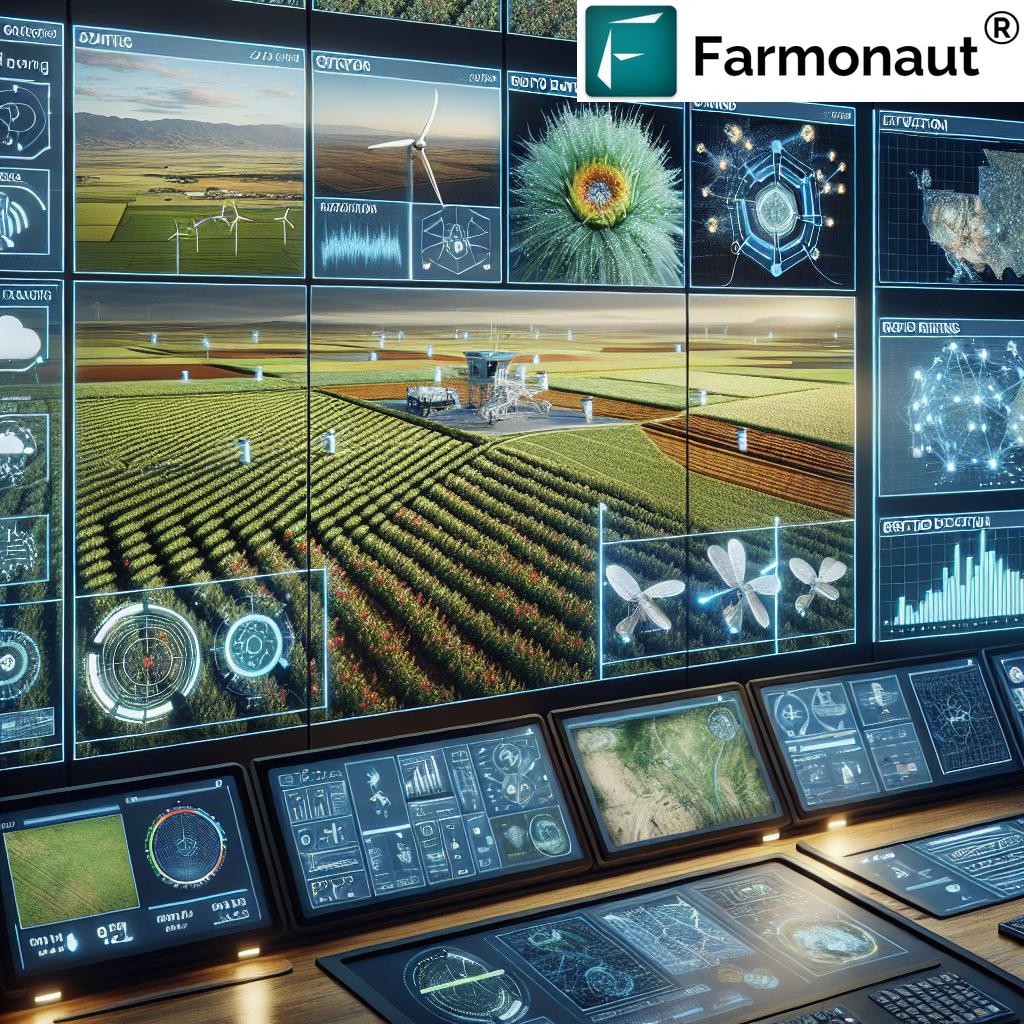
Want automatic alerts on crop stress? Farmonaut’s crop health monitoring system uses real-time satellite data to detect field issues, transforming the way we manage and monitor our farming operations.
4. IoT in Agriculture & Smart Sensors
The rise of the Internet of Things (IoT) in agriculture has revolutionized how we collect and monitor crucial field data. Embedded smart sensors in soils, plants, water systems, and equipment continuously capture real-time measurements, giving us immediate insights for efficient management.
- How IoT & Smart Sensors Work:
- Soil sensors measure moisture, nutrient levels, and temperature
- Weather stations monitor rainfall, humidity, wind, and sunlight
- Automated irrigation systems adjust water use based on live data, reducing wastage
- Machinery sensors monitor equipment health and performance
- Example: IoT irrigation controllers combined with Farmonaut satellite analysis can reduce water usage by efficiently directing resources only where needed, saving up to 20% on irrigation costs.
Integrate smart sensors with data analytics for unmatched large-scale farm management, streamlining operations for agribusinesses and cooperatives across India and beyond!
“Smart farming systems reduce water usage by nearly 20% through real-time soil and weather monitoring technologies.”
5. Artificial Intelligence and Machine Learning in Agriculture
We’re witnessing a shift from reactive to predictive agriculture, powered by artificial intelligence (AI) and machine learning. These systems digest vast datasets—from drone and satellite images to sensor feeds and climate archives—and extract actionable recommendations for every stage of the crop cycle.
- What AI Can Do for Farmers:
- Analyze complex patterns for optimal planting and harvesting dates
- Predict trends like pest outbreaks, disease risks, and yield potential
- Recommend precise input timings for fertilizers, pesticides, and irrigation
- Support farm management with real-time decisions and early warnings
- Example: Farmonaut’s Jeevn AI Advisory System delivers personalized crop guidance and weather forecasts, making AI in agriculture accessible and effective for every field.
Need tailored decision support? Tap into Farmonaut’s AI-driven farm advisory tools for actionable insights, weather alerts, and best practices—right on your mobile, web app, or API.
6. Blockchain for Secure Product Traceability
As global food supply chains grow more complex, ensuring transparency and authenticity is critical. Blockchain technology is transforming traceability in agriculture by creating tamper-proof records for every step—from seed to store shelf.
- How Blockchain Benefits Agriculture:
- Verifies crop origin, handling, and processes
- Reduces fraud and improves food safety
- Enables secure and transparent data management
- Builds trust with buyers, retailers, and consumers
- Example: Farmonaut uses blockchain for agricultural product traceability, keeping data secure and transparent across the supply chain.
Want verifiable product transparency? With Farmonaut’s blockchain-based solutions, companies and farmers can ensure authentic, secure, and traceable food products—building a reputation for quality and compliance.
7. Autonomous Farming Equipment: Robots & Smart Machinery
We’re entering an era where robotics and autonomous equipment are re-shaping our farm fields. Smart tractors, robotic planters, and harvesters are guided by AI, GPS, and sensor arrays—conducting operations with incredible precision, minimal human intervention, and maximum efficiency.
- Benefits of Automation:
- Addresses labor shortages and rising costs
- Operates 24/7 under exact parameters for tilling, seeding, spraying, and harvesting
- Reduces chemical and water use by targeting only what’s needed
- Mitigates errors and improves field operations
- Example: Autonomous tractors can be remotely monitored, optimized via live data feeds, and scheduled for precise operations—integrating seamlessly with Farmonaut’s fleet management tools.
Efficient machinery management = higher profits. With Fleet Management from Farmonaut, logistics, safety, and operational efficiency of all your autonomous farm equipment is enhanced, reducing both risk and operational costs.
Technology Impact Comparison Table: Precision Farming Breakthroughs
| Technology Name | Core Functionality | Estimated Yield Increase (%) | Estimated Cost Reduction (%) | Sustainability Benefit | Adoption Level |
|---|---|---|---|---|---|
| GPS & Auto-Guidance Systems | Automated equipment navigation and precise field operations | 10–15% | 8–12% | Reduces overlap, conserves energy | High |
| Variable Rate Technology (VRT) | Adjusts inputs per field zone needs | 15–25% | 10–20% | Reduces fertilizer/pesticide runoff | Medium |
| Remote Sensing & Drones | Aerial/satellite crop health imaging | 8–12% | 5–10% | Minimizes unnecessary chemical use | High |
| IoT & Smart Sensors | Real-time soil/weather data monitoring | 12–18% | 8–15% | Reduces water/energy waste | Medium |
| AI & Machine Learning | Predicts/prescribes crop management actions | 15–30% | 12–20% | Supports proactive interventions | Medium |
| Blockchain Traceability | Secures, digitizes supply chain records | 5–10% | 5–8% | Prevents fraud, ensures transparency | Low |
| Autonomous Equipment | Self-operating tractors, sprayers, etc. | 12–20% | 15–25% | Reduces labor, chemical, & fuel usage | Medium |
Benefits of Precision Farming
By embracing these smart farming systems and integrating them into our everyday agricultural practices, we benefit from:
- Increased Yields: Optimized input use and targeted management raise productive capacity per hectare
- Cost Savings: Streamlined operations mean less fertilizer, water, and labor expenditures
- Environmental Sustainability: Smart application of pesticides and fertilizers reduces runoff and preserves soil health
- Improved Efficiency: Automation and real-time monitoring compress operation cycles
- Better Risk Management: AI and predictive analytics help us mitigate threats from weather, pests, and disease
- Enhanced Traceability: Blockchain-powered supply chain transparency fosters trust and safety
Farmonaut’s platform extends these benefits further. With carbon footprint tracking, our agribusinesses measure and manage environmental impact, meeting regulatory standards and moving towards climate-smart agriculture.
Challenges in Implementing Precision Agriculture Technologies
While the potential is immense, we must also be realistic about the hurdles in adopting precision agriculture:
- High Initial Costs: Advanced equipment, software, and sensors can be cost-prohibitive for small-scale farmers (Farmonaut helps level the field with affordable, subscription-based monitoring)
- Technological Complexity: Training is essential for interpreting complex data and making the most of smart farming systems
- Connectivity & Infrastructure: Consistent internet and GPS coverage may be lacking in remote agricultural zones
- Data Privacy & Security: As more farm management moves online, responsibly securing sensitive data is a must
- Scale of Implementation: Scaling up from pilot to full farming operations can be technologically, financially, and logistically demanding
Farmonaut addresses many of these barriers by:
- Offering cost-effective, satellite-based solutions that don’t require expensive hardware
- Providing easy-to-use mobile, web, and API interfaces
- Supporting educational resources and advisory systems
- Ensuring data security with blockchain and robust digital frameworks
Are you a developer or agritech business? Access satellite and weather data APIs for your own platforms with:
Emerging Trends & Innovations: The Future of Sustainable Agriculture
As digital agriculture continues to evolve, here are key trends and next-gen breakthroughs reshaping the landscape:
Integration of AI, IoT, and Blockchain
- AI in agriculture uses machine learning, computer vision, and natural language processing for predictive crop management and process automation
- IoT in agriculture knits together sensors, machinery, and cloud analytics for seamless, efficient operations
- Blockchain ensures product authenticity, transparent payments, smart contracts, and data integrity in agri-supply chains
Nanotechnology & Supercharged Sensors
- Emergence of nanosensors embedded in soil or plants to monitor health at the molecular level
- Graphene-based or fiber-optic nanosensors for real-time detection of soil nutrient imbalances, pathogens, or contaminants
- Faster, more proactive interventions for higher yields and reduced chemical usage
Rise of Fully Autonomous Farming Systems
- Self-driving tractors, robotic weeders, and drone fleets are making labor-intensive chores obsolete
- Autonomous fleets operate continuously, maximizing field efficiency and minimizing errors
- Farmonaut helps manage autonomous equipment, controlling logistics, maintenance, and operations via a single dashboard
Data-Driven Decision Support
- Future farming relies on central farm management platforms (like Farmonaut), aggregating satellite, drone, and sensor data
- Supports real-time alerts for pests, extreme weather, or stress conditions
Sustainable Resource Management Practices
- Carbon footprint tracking (see: Farmonaut’s Carbon Footprinting Tool) for climate-smart operations
- Water, fertilizer, and pesticide usage monitored for compliance and cost savings
- Blockchain-supported agri-traceability assures safe, transparent food supply
Precision Farming Made Easy with Farmonaut
At Farmonaut, our mission is simple: make precision agriculture affordable, accessible, and scalable for farmers worldwide. By integrating satellite imagery, AI-powered advisory, blockchain-based traceability, and resource management tools into a single, user-friendly platform, we help revolutionize agribusiness at every scale.
- No expensive hardware. Farmonaut’s data-driven farming solutions leverage cloud-based and mobile technology—available for every field, anytime.
- Real-time crop health monitoring. via multispectral imagery and AI analysis (NDVI, soil moisture, crop vigor, stress alerts).
- AI-based personalized advisory. (Jeevn AI system) offers tailored best-practice recommendations for every stage of the crop lifecycle.
- Blockchain-enabled product traceability. strengthens supply chain transparency and trust for corporates, governments, and cooperatives.
- Fleet & Resource Management. ensures machinery, vehicle, and operational efficiency across large farming enterprises.
- Carbon footprinting tools. support sustainability and regulatory compliance in the age of climate-focused agriculture.
We proudly serve individual farmers, cooperatives, large agribusinesses, corporate clients, government agencies, NGOs, and financial institutions—empowering every stakeholder in agriculture to make data-driven, sustainable decisions.
Explore our subscription packages for every farm size, with flexible monitoring frequencies and easy integration via web, Android, iOS, and APIs.
Start your journey towards smarter, more sustainable agriculture practices: Try Farmonaut Now
Farmonaut Subscription Plans
Choose the plan that fits your needs and unlock the full power of satellite-based crop monitoring, AI guidance, and precision farming. Pay for what’s relevant—scale as your farm grows!
Frequently Asked Questions (FAQ) on Precision Farming & Farmonaut
1. What is precision farming and why is it important?
Precision farming is an innovative agricultural approach that uses advanced technologies—such as GPS, IoT, AI, drones, and satellite imagery—to optimize input use, boost yields, save costs, and promote environmental sustainability. It enables smarter resource management, reduces waste, and supports data-driven farming decisions for all scales of agriculture.
2. How does AI improve farm operations and yields?
AI in agriculture analyzes vast streams of field and weather data to make recommendations, predict pest or disease outbreaks, and optimize timings for planting, irrigating, and harvesting. This increases productivity, minimizes resources, and improves farm profitability.
3. Can small-scale farmers afford precision agriculture technologies?
Modern platforms like Farmonaut make precision farming highly accessible by offering subscription plans, low-cost satellite imagery, and easy-to-use web and mobile apps—removing the barrier of expensive hardware and in-field sensors.
4. What does Farmonaut offer that traditional agri-tools don’t?
Farmonaut combines satellite-based monitoring, AI-driven crop management, blockchain traceability, fleet/resource management, and carbon footprinting within a single, cloud-driven platform, serving everyone from small farmers to large agribusinesses and government agencies for truly scalable data-driven farming solutions.
5. Is my farming data safe with Farmonaut?
Yes! Farmonaut prioritizes data security and privacy using blockchain and secure data management frameworks. Your farm’s information is protected from unauthorized access and misuse.
6. How can I access Farmonaut’s services?
Farmonaut’s platform is available via Web, Android, iOS, and APIs for integration into custom agritech/developer solutions.
7. Which advanced features does Farmonaut provide for enterprises?
Agribusinesses and cooperatives can leverage enterprise features like large scale farm management, carbon footprint tracking, fleet operations, product traceability, and API access for real-time data integration, making it easy to manage field operations, regulatory compliance, and customer trust.
8. Where can I learn more or connect with Farmonaut?
Visit Farmonaut’s official website for in-depth product information, guides, and free resources, or contact support via email/mobile within the app.
Conclusion: A Smarter, Sustainable Agricultural Future
The era of precision farming has arrived—ushering in a new generation of farmers who are as comfortable with data dashboards and satellite imagery as they are with soil and seeds. By adopting AI-driven smart farming systems, IoT in agriculture, remote sensing, VRT, and blockchain-powered traceability, we are not just growing better crops—we are building a stronger, more resilient food system for India and the world.
With easy-to-use, affordable technology platforms like Farmonaut, even small-scale producers can access the benefits of advanced precision agriculture technologies. Our fields become laboratories for efficiency, our operations become models of sustainability, and our yields reflect the best of both nature and science.
Join us on this journey toward smarter, cleaner, and more profitable agriculture—powered by precision, driven by innovation.



